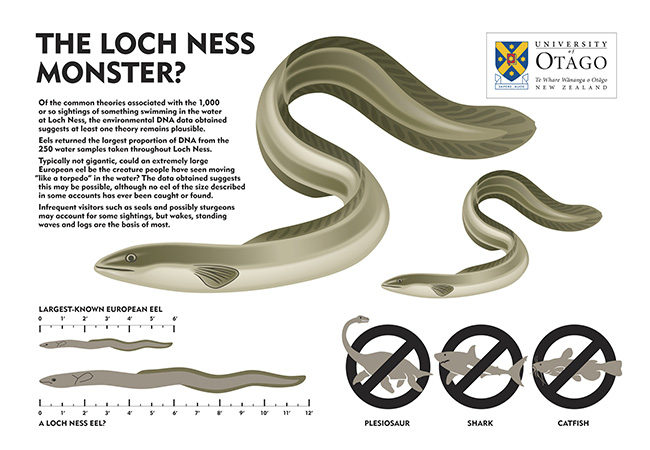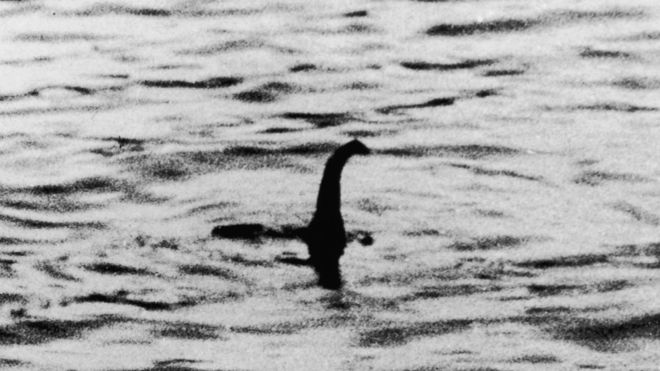A New Zealand scientist believes that he has a new lead in the search for the answer to the longstanding mystery of the Loch Ness monster, rumoured to live in Scotland’s most famous lake.
Professor Neil Gemmell, from the University of Otago, revealed the findings of his study into the environmental DNA from the lake earlier this month in Scotland.
According to a statement from the university, 250 samples of lake water were used to capture, extract and sequence DNA to compare against global databases. These results revealed a comprehensive picture of life in Loch Ness, including bacteria, fish and a significant amount of eels.
The abundance of eel in the lake and the lack of evidence from the DNA samples of any other kind of sea creatures that feature in popular theories about the elusive monster, have led Gemmell to hypothesise that what thousands of people have claimed to they have seen is actually a giant eel.

‘People love a mystery, we’ve used science to add another chapter to Loch Ness’ mystique,’ Professor Gemmell said in a statement, ‘based on the descriptions from the 1,000 or so sightings of something in the water at Loch Ness, our data supports one of the main explanations of what people have seen – that the monster is a giant eel – and discounts the three other main explanations.’
These three explanations by the team were that the creature could be a shark, catfish or plesiosaur.
While there have never been any sightings of a giant eel reported before, Gemmell believes, based on his DNA evidence, that this is likely the best answer. ‘Well, our data doesn’t reveal their size, but the sheer quantity of the material says that we can’t discount the possibility that there may be giant eels in Loch Ness. Therefore we can’t discount the possibility that what people see and believe is the Loch Ness Monster might be a giant eel,’ he said.
Scotland have welcomed the findings with VisitScotland Regional Leadership director Chris Taylor saying in a statement that the legend transcends Scotland and is a part of global popular culture.
‘It’s findings will provide further insight into what lies beneath but questions still remain, and visitors will, no doubt, continue to be drawn to the loch to seek the answers for themselves,’ he said.
Loch Ness Monster Mystery
Tales of the Loch Ness monster can be traced back all the way to the 7th century. The earliest written reference is found in the biography of Saint Columba. He allegedly stopped by the lake to chastise ‘Nessie’ for killing people in the lake. Interest in this elusive creature has not abated ever since. In the 1930s, photographers were offered a 20,000 pound reward by a circus for a picture and London newspapers were sending correspondents to the lake to see if they could find anything to report.
One of the most famous photographs, which was proven to be a hoax, sparked the continuing theory that Nessie is a long-extinct plesiosaur. All of these water-dwelling dinosaurs died off 65 million years ago. Today there are still videos of an unidentifiable animal moving through the waters appear and re-ignite imaginations around the legend.
Image source: Wikicommons


















